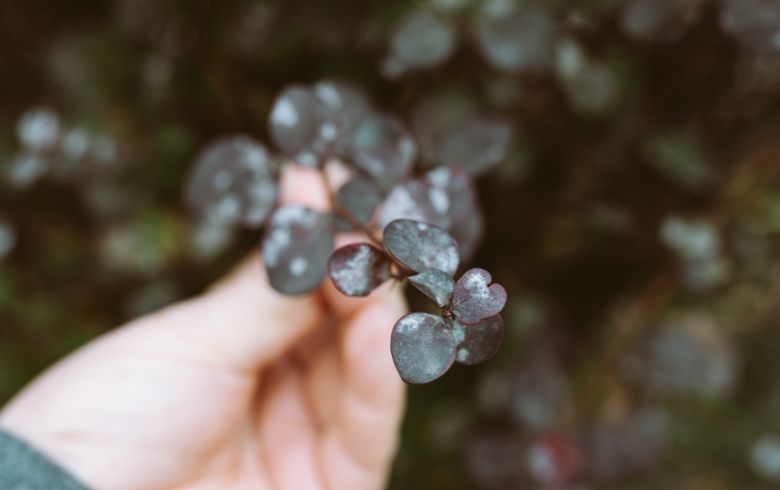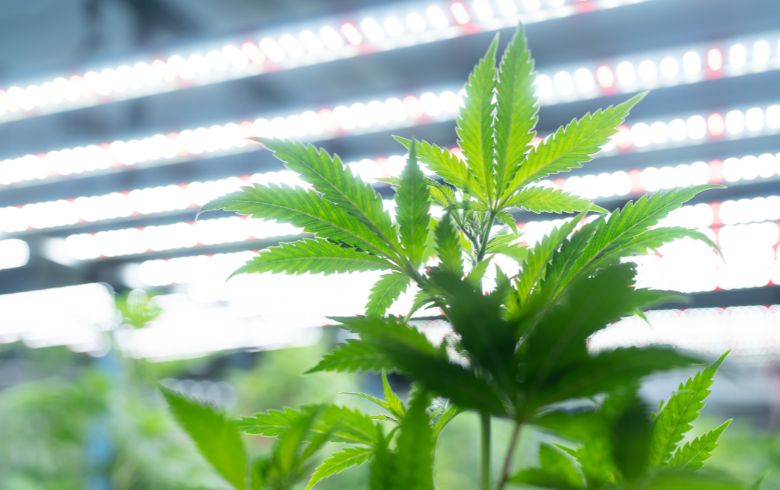When it comes to cultivating, we must always take into account that plants can develop multiple diseases that may affect their health. In fact, powdery mildew is one of the most common ones, and to understand what is powdery mildew in plants and how to get rid of it, in this article we’ll provide the essential information about this subject.

What is Powdery Mildew in Plants
Powdery mildew is a very common disease in marijuana plants, which primarily affects the leaves and young stems. It is characterized by the formation of a pale-colored crust, mainly ranging from white to light gray, covering the leaves and stems of the plants.
This disease easily spreads or reproduces through spores that are carried by the wind. When conditions are favorable, these spores germinate and begin to grow on the surface of the plant’s leaves and stems. This can be highly detrimental to the health of the plants as it reduces their ability to photosynthesize and, consequently, their growth and production. Furthermore, powdery mildew can weaken the plants and make them more susceptible to other diseases and pests.
Symptoms of Powdery Mildew in Plants
Powdery mildew is a fungal disease that affects plants, and it’s characterized by the formation of a white, powdery layer on the leaves, stems, and flowers. Find below the symptoms of powdery mildew in plants:
- White spots: These spots are caused by the growth of the fungus on the leaf’s surface and may be more prominent on the upper side of the leaf.
- Loss of color: As powdery mildew spreads, leaves can lose their natural color and turn yellow or brown.
- Deformation of leaves, stems, and flowers: Leaves may curl, and flowers may not fully develop. Stems can weaken and bend under the weight of the flowers.
- Stunted growth: Powdery mildew can slow down the plant’s growth because the fungus can interfere with the plant’s ability to photosynthesize and absorb the necessary nutrients for growth.
- Premature leaf drop: In severe cases of powdery mildew, leaves can fall prematurely from the plant. This can be especially problematic for ornamental plants as it can affect their appearance and reduce their aesthetic value.
Causes of Powdery Mildew in Plants
Powdery mildew is a disease caused by different types of fungi that can have a negative impact on our crops. Some of the causes of powdery mildew in plants include:
- High humidity and moderate temperatures: Plants are more susceptible to developing powdery mildew in environments with excessive humidity and poor ventilation. In addition, this disease often occurs in spring and fall, under low light conditions.
- Powdery mildew often takes hold on plants that are already weakened by other pests or diseases.
- Choosing a specific plant: While some plant species are more susceptible than others, it’s a disease that can affect all plants. However, choosing powdery mildew-resistant plants can help prevent its occurrence.
How to get rid of Powdery Mildew
Powdery mildew can cause significant damage to crops. So, in order to reduce the risk of infection, there are some tips to keep in mind:
- Keep plants healthy and strong by providing them with the right nutrients and adequate water. It’s also important to avoid stressing the plants, as this can make them more susceptible to infection.
- Control the environment by installing ventilation systems for proper air circulation.
- Use natural fungicides to help prevent powdery mildew, such as baking soda, neem oil, or milk. There are also some highly effective fertilizers that can be employed as a prevention method.

Products to prevent Powdery Mildew in Plants
Nowadays, there are multiple products available to get rid of this type of pest. Thus, you’ll find below a list of some of the best fungicides for powdery mildew of our catalog:
Fungi Boom
Fungi Boom by Boom Nutrients is the ideal product to combat various types of fungi that can affect cannabis cultivation, such as stem rust, powdery mildew, and downy mildew. When applied from the start, it can help keep these types of fungi in check. Besides, you can use them both as a preventive method and as a treatment, improving nutrient transport.

To use it, simply spray it, thoroughly saturating the plant. For preventive purposes, it should be applied at a rate of 2 ml per liter every 10 days, and for curative purposes, every 7 days.
Amanitha Fungicide
Agrobacterias Amanitha Fungicide allows for the eradication of powdery mildew and botrytis. With this product, you can combat these fungi when they establish themselves in the crop, thanks to its composition that includes free amino acids, various types of acids, and arginine, among others.

To use it, you can apply it foliarly on the plants, providing immediate protection or addressing the fungi when they are already established, at a dosage of 5 ml per liter.
In summary, powdery mildew in plants is one of the most common fungi in marijuana plants; and to get rid of it, we can use multiple effective products, although it is most advisable to use preventive methods at all costs. We hope that you found this article useful to learn what powdery mildew is in plants and how to get rid of it.
 Personalized attention +34 96 206 62 98
Personalized attention +34 96 206 62 98 Free shipping to Iberian Peninsula from 30€
Free shipping to Iberian Peninsula from 30€ 9/10 Rating
9/10 Rating Discreet shipping
Discreet shipping






